Some students have this burning desire to “do it all,” and that is exactly how Sofia Turco went about her college career here in Textile Design. Sofia tackled the disciplines of printing, weaving, and knitting head-on and is equally suited to all three. Her commitment to sustainability drove the concept for her capstone collection. In support of that concept, she researched GOTS-certified yarns, local yarn companies, and natural dyeing. Read on to hear Sofia’s experiences in her own words. After that, you can see more of her work at sofiaturco.myportfolio.com and on Instagram as sof.textiles.
Update! We congratulate Sofia on winning the Jefferson Outstanding Textile Design Student Award!
How did you choose Textile Design as a major?
When I was a sophomore or junior in high school, an alum of my high school attending TJU/PhilaU visited during art class one day. She showed us some of the work she was making and talked about what life was like as a design student in college.
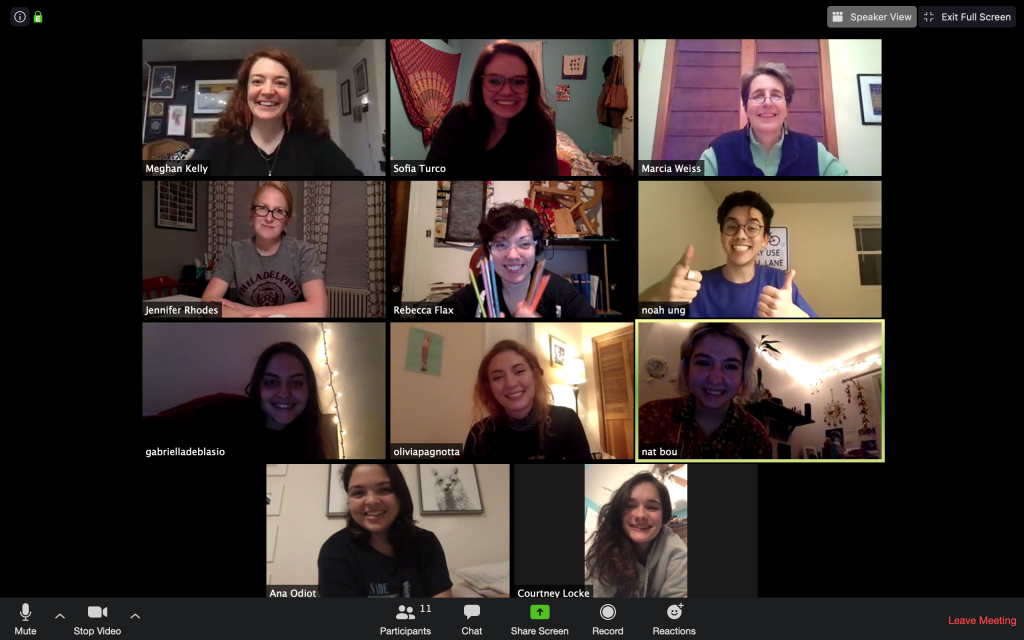
When did you learn to knit/weave/print, and who taught you?
My grandmother taught me to knit for the first time when I was about 10; I didn’t stick with it for long. Eventually, in high school, I taught myself how to crochet and loom knit with chunky yarn, thanks to the internet. I guess I can also say I learned to weave around the same time, nothing technical, just a needle threaded with yarn that I was using to weave by hand on and an old frame loom that I found in the back of the art room closet. Same for my first print designs (even though I didn’t know it at the time), those were some early art assignments.
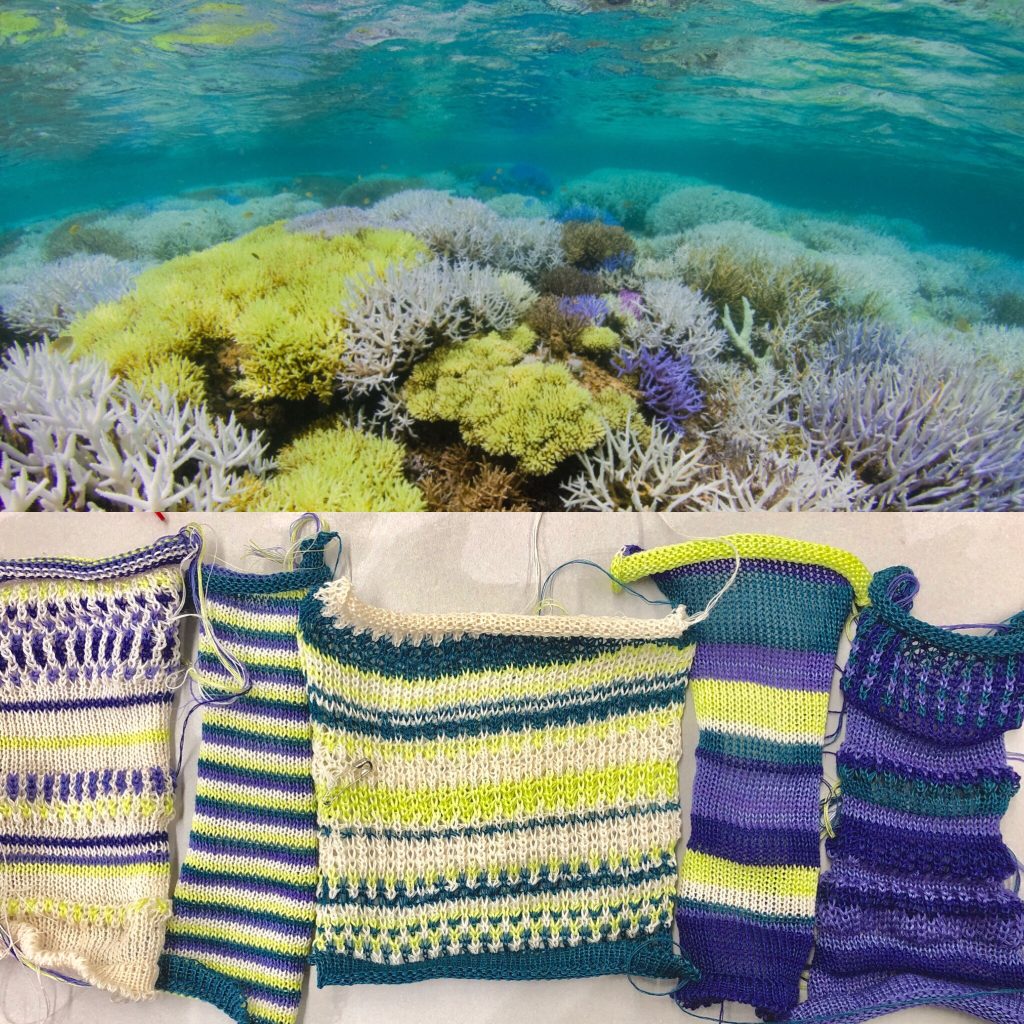
Do you have a background in design or textiles?
Yes, I have always loved to make things! Along my fine arts path, I realized that career options as a designer were more appealing to me than as an artist. It took me a while to grasp the difference between art and design, and I was making a lot of work that I would classify as “in-between” for a while; maybe I still do.
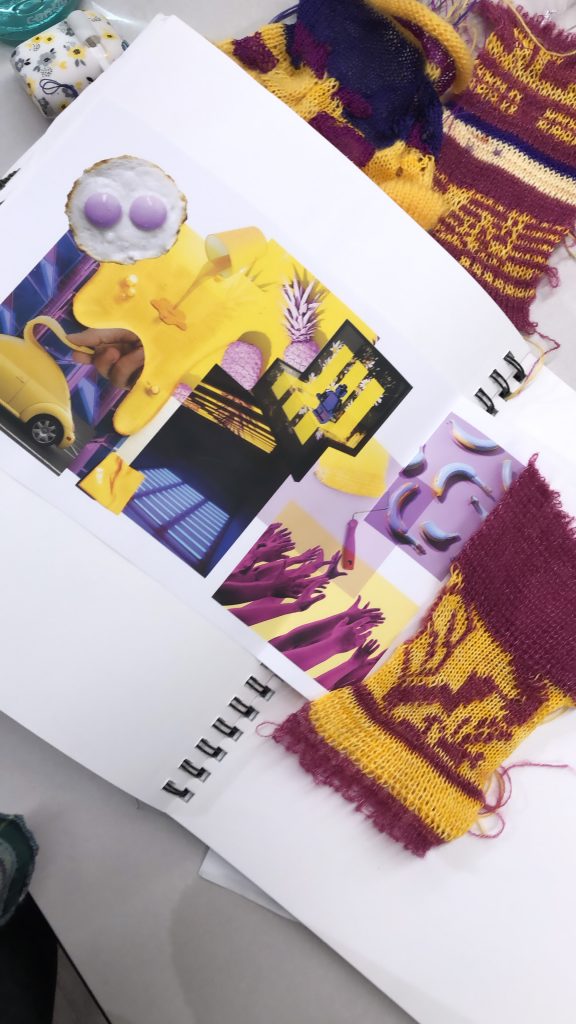
Are there any techniques in textile design you’d like to explore further?
Yes, so many! Primarily I would like to learn more about how fibers become yarn and would eventually like to be able to spin yarn myself.

What do you have on your knitting machine/loom/sketchbook today?
- Knitting Machine: Double bed jacquard
- Dobby Loom: Linen stripe set up for plaids and to weave my textile iteration waste into the fabric
- Jacquard Loom: Double Cloth fabrics
- Sketchbook: Gouache and watercolor paintings, and a lot of notes/lists in crazy colors
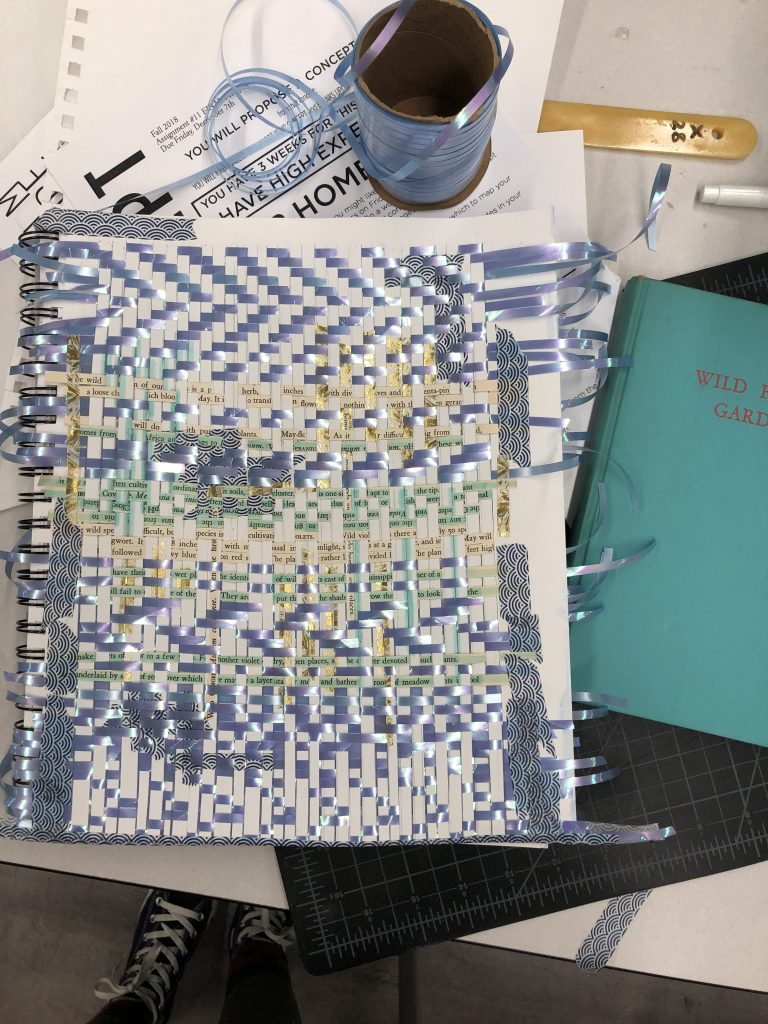
What kind of music do you listen to in your headphones?
Dayglow!
What is your favorite textile era or culture?
I loved learning about Ancient woven textiles. The fact that we started out making the fabric for our garments to the exact shape needed gives me hope for the future.
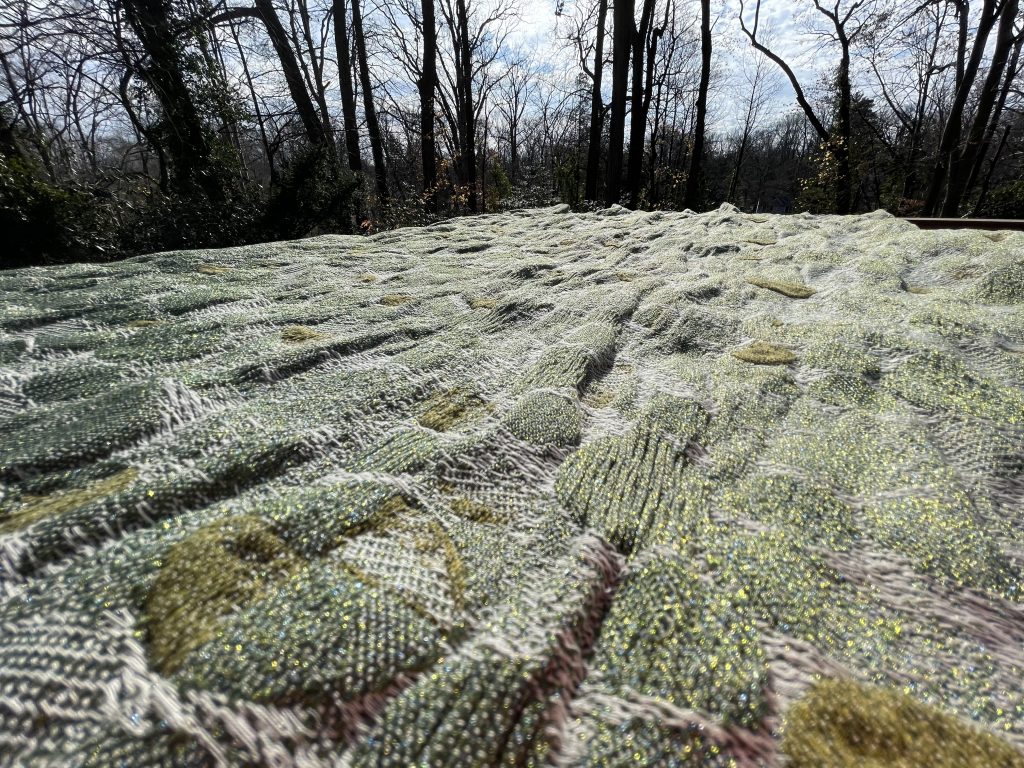
What is the most challenging aspect of being a designer?
Constantly feeling like I have no idea what I’m doing. I’ve been pursuing art and design in what I think is a serious way for about 7 years, and I rarely feel confident in what I’m making until afterward.
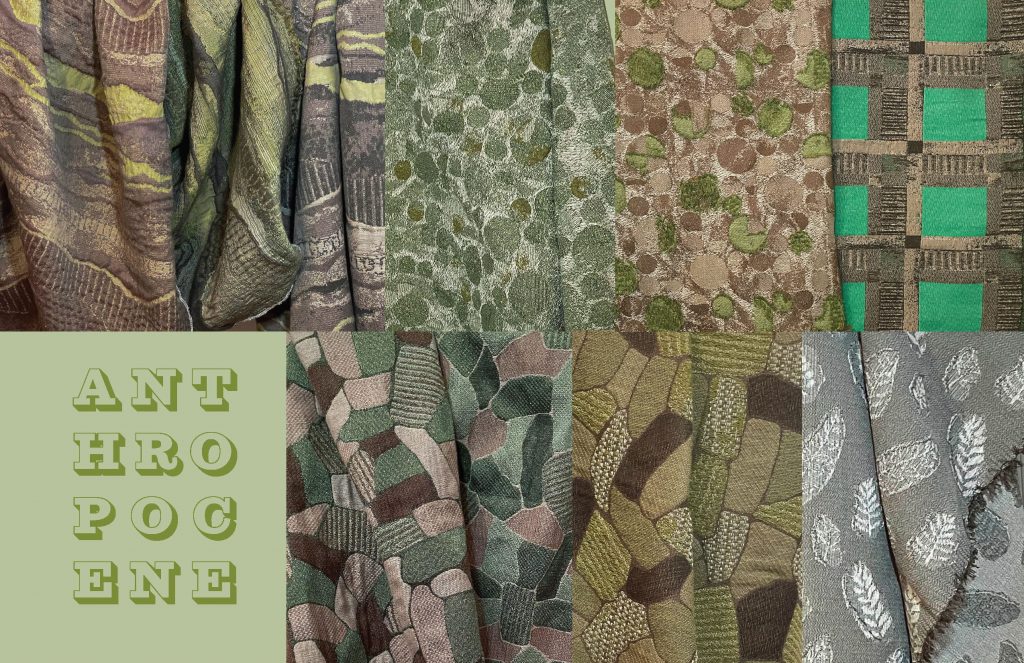
Where do you see design intersect with other parts of your life that you hadn’t noticed before going through this program?
I feel like I see the world in such a different, more detailed way! Fabric is everywhere, and being able to look at something, understand what’s going on, and interpret how it was made is so fun, almost like a secret language.
What will you miss the most about JeffU/DEC/Textile Design once you graduate?
I will miss being around such an amazing group of creative and funny people who have taught me so much.
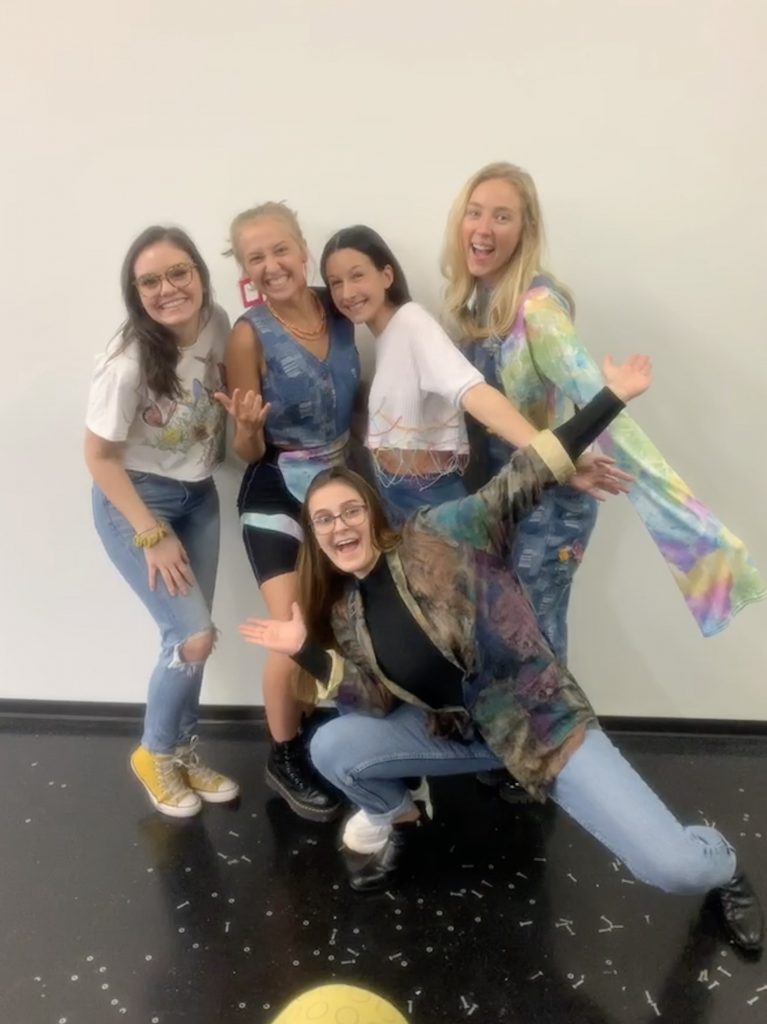
What advice would you give an incoming student into the Textile Design department?
Try not to give up on or disregard any of the three areas of textiles we learn about in this program (Print design, weaving, and knitting). Eventually, you might focus on one or two, but they are all important! Also, I would recommend taking a walk over to the library to check out the magazine and journal archives on the lower level at least once during your first year (you’ll be back, so go early on).
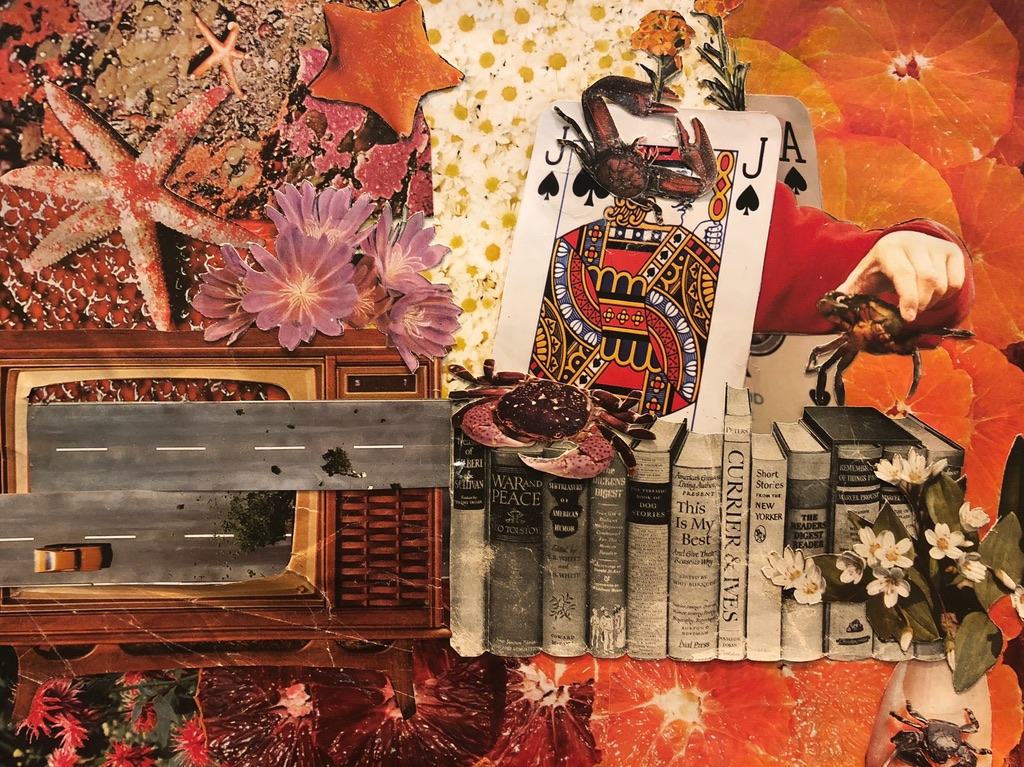
What surprised you the most about Textile Design at Philau/Jefferson?
If I am working through a project and my method is not working out, I know that I will always be able to find someone that can remind me or teach me about another way to do whatever it is I’m trying to do. My favorite type of this “another way” phenomenon is when a suggestion cuts out modern techniques or equipment because those instances keep proving, at least to me, that maybe some of the analog techniques from a few decades ago are the most reliable options sometimes.




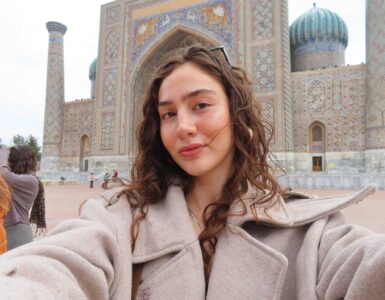

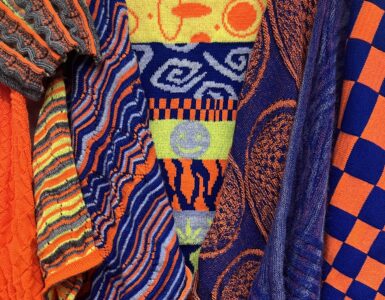

Add comment